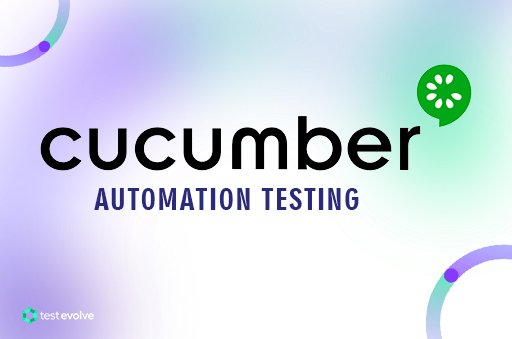An Overview of Cucumber Automation Testing
Beginners or experts, we’ve almost certainly all heard about the Cucumber Automation Tool. It’s usually described as a tool that facilitates BDD or a tool that helps users build automated acceptance tests from their documentation. Let’s explore some of the more in-depth definitions and fundamentals of BDD and Cucumber Automation.
What is BDD and Cucumber Testing?
BDD, or Behaviour-driven Development, is a software development methodology that helps bridge gaps between teams(business teams and technical teams) and builds a shared understanding of app/product behaviour by generating documentation that both teams can easily read and understand.
The business teams understand the user scenarios or the anticipated UI and the technical teams are responsible for developing, testing and delivering the application.
The BDD process starts with the user story, an informal and general explanation of a software feature handed over by the business teams to the technical teams for “translation” and implementation. This is where Cucumber comes into play!
What is Cucumber in Testing? Cucumber is an automation testing tool that facilitates the creation of automated acceptance tests from the collaboration between stakeholders, product owners, developers and testers.
Simple user journey steps written in plain English (or many other languages) that reflect the core user story, are quickly rendered into tests that drive your application and make test assertions along the way.
To further increase the amount of test coverage, example tables can be used to run a scenario many times with different data sets.
Cucumber’s primary advantage is that it enables the creation of a comprehensive suite of acceptance tests for BDD Features and Scenarios, that are understood, agreed and signed off upon, by the whole delivery team and the business stakeholders.
This framework also allows for code reuse, significantly reducing time and complexity when constructing additional tests that may also have a common start point or series of user actions.
Cucumber operates with a language called Gherkin, used to define test cases that are human-readable, and has implementations in Ruby, Jruby, Java, Groovy, Javascript, .NET, PHP, C++, etc.
Cucumber Automation Basics
Tests in Cucumber are written within a special plain text file with a .feature extension known as the Feature File.
The Feature File contains features, scenarios and steps, the wireframe components on which it is built.
The Feature keyword describes application functions to be holistically tested and conveys in detail what a user journey for that application function should look like. Cucumber will run test scenarios based on these Feature functions.
Scenarios are used to further breakdown (and describe) Features, into manageable development tasks and associated acceptance tests. It is recommended that we don’t exceed the advised number of steps(3-5) for each scenario to avoid losing its simplicity, directness and ease of understanding.
The Steps are written in a sequence in the scenario and will be run in the same order. They can start with the following keywords: Given, When, Then, And/But.
Best practices for writing Robust Cucumber tests
Here are some best practices for writing effective Cucumber tests:
Write test scenarios as early as possible. This will help you identify potential problems early in the development process.
Features and Scenarios. Each feature file should contain a set of related scenarios. Each scenario should describe a single, atomic test case.
Use Background. The Background section of a feature file can be used to define steps that are common to all of the scenarios in the feature.
Try to reuse step definitions. This will help keep your code DRY (Don't Repeat Yourself).
Use a Data Table. A Data Table can be used to define a set of test data that can be used to drive multiple scenarios.
Use meaningful scenario titles and descriptions. This will help you and others understand what the scenario is testing.
Use the Given-When-Then format. This is the standard format for writing Cucumber scenarios.
Avoid conjunctive steps. A conjunctive step is a step that contains multiple actions. It is better to break these steps down into smaller, more atomic steps.
Use the correct tags. Tags can be used to group scenarios together and to control which scenarios are run.
Use the correct language. Cucumber supports a variety of languages, including Gherkin, Ruby, Java, and Python. Choose the language that is best suited for your project.
Use a good Cucumber framework. There are a number of good Cucumber frameworks available, such asCapybara, Selenium, and Robot Framework. Choose a framework that is well-supported and meets your needs.
Test early and often. The earlier you find a bug, the easier it is to fix. Make sure to test your code frequently, both manually and with Cucumber.
Get feedback from others. Once you have written your Cucumber tests, get feedback from others to ensure they are clear and easy to understand.
Keep your tests up-to-date. As your code changes, make sure to update your Cucumber tests accordingly. This will help ensure that your tests are always accurate and reliable.
Also Read: Best Practices and Anti-Patterns in BDD Cucumber Automation - Part l
Using Gherkin Language and Syntax
BDD Features and Scenarios have supporting tests written in Gherkin and then parsed and executed by Cucumber Testing Framework. A single Feature may have 1 or many supporting Scenarios.
The Given keyword indicates a precondition and describes the system's initial state, whereas the When keyword specifies an event or action. Lastly, the Then keyword describes the intended output of the user journey. The But phrase adds a negative condition, whereas the And keyword is used to add subsequent steps to a scenario.
Given = precondition, describes the initial state of the system
When = describes an action or event, a trigger
Then = verification, comparing the expected outcome to the actual outcome
And/But = used when having subsequent steps(given, when, then)
Advantages of using Gherkin
One of the best things about Gherkin is how easy it is to integrate requirements linked acceptance testing directly into the automation process. It also facilitates better code reuse with the use of common Gherkin scenario steps which might be required by multiple test scenarios.
Using Gherkin allows for easy translation of user requirements into acceptance tests, which brings together the technical and business sides of the business and aids in producing a well-tested, higher-quality application with real traceability to source requirements. Businesses find that because each Feature and its Scenarios are directly represented by automated acceptance tests, they quickly build up a library of ‘living documentation’. As long as a test is running and passing, your Features and Scenarios are perfect up-to-date narrators of your application’s functionality.
Gherkin - best approaches
If you want optimal results while using BDD, Cucumber Framework and Gherkin, keep your scenarios simple and straightforward. As mentioned earlier, one of the best approaches is to guarantee that each scenario only evaluates one specific behaviour at a time. More than 3-5 steps might affect the scenario's outcome altogether. Best practice advocates that a user scenario focuses on the intent of the user journey and the outcome, rather than the UI specifics of exactly how that user journey would be undertaken in the application.
It is also best to avoid coupling steps using the 'and' keyword and divide them into independent scenarios. When there is only one action in a step, it boosts modularity and reusability.
Why choose Cucumber Automation?
Software development begins when the business side delivers the requirements and documents the desired user behaviour or journey within that application. A communication cycle between product owners, developers, and testers follows, discussing and brainstorming user stories and acceptance criteria throughout. Cucumber is an outstanding tool to build requirements into automated acceptance tests with maximum traceability and transparency of test coverage.
With each cycle of testing, delivery teams will see their library of living documentation grow and this is fantastic for both customer support teams and application user guides.
Test Evolve Spark, Flare and Halo all fully support the use of BDD Features and Scenarios with the use of Cucumber and Gherkin to build and execute your tests. On top of that, you can also choose to write your code in Ruby, JavaScript or TypeScript. Test Evolve is available for a 30-day FREE trial. Get testing now and experience all of the many benefits that Cucumber has to offer.




